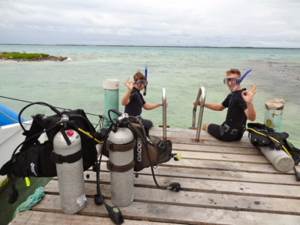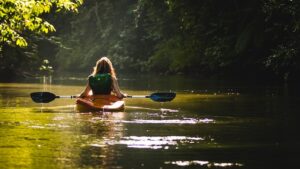
Belize is Central America’s only English-speaking nation, yet also boasts multiple indigenous languages that its residents speak fluently – the three most prevalent being English, Spanish, and Kriol (Creole). Creole is a language composed of influences from English and West African dialects, used as the common tongue among various ethnic groups in Belize and as an official mode of communication among all citizens.
The main Languages Spoken in Belize
Belize, an English-speaking nation situated within a Spanish-speaking continent, remains unique among Central American nations in that English remains its primary language. Since gaining independence from Britain in 1981, Belize has maintained the use of English in public education, media production, and government proceedings as its official tongue.
Belize’s population speaks English at an impressively high rate, while many can also communicate effectively in Spanish or Belizean Creole – a Creole language combining English with influences from West Africa. Belize English is spoken by 63% of its population, making up its primary means of public education, media consumption, and government use. Furthermore, English serves as a universal lingua franca between different ethnic groups in Belize.
Spanish is another major language in Belize and is widely spoken among indigenous groups and immigrants. Many native and second-language Spanish speakers in Belize are Mestizos who originally hail from Mexico but settled here during the 19th-century migration wave. People who aren’t Mestizos may still speak Spanish in areas near Mexico and Guatemala’s border, although many prefer “Kitchen Spanish,” an abbreviated version that incorporates elements of Kriol or Belizean Creole into it.
Belize’s third significant language is Mayan, understood by a significant portion of the population. This ancient dialect can be broken down into three dialects: Q’eqchi’, Mopan, and Yucatec Maya – these three are mostly spoken within the Maya Mountains while Yucatec Maya speakers can be found throughout Mexico and northern Belize. Garifuna, spoken by approximately 2.9% of the population and classified as an African Arawakan language with speakers coming from West Africa, the Caribbean, and Arawak descent, is another minority language found in Belize.
Belize also hosts several minority languages, such as various Lebanese varieties and an antiquated German form known as Plattdeutsch or Low German which is spoken primarily among Mennonites. Unfortunately, those who speak standard (or “High”) German find it hard to understand this version of German; therefore, it remains rare in Belize.
Belizean Language: A Multicultural Mix
Belize boasts an assortment of ethnic groups with their own distinct languages. Some ethnic groups are well established while others may be newcomers to the country. The Maya culture can still be found today and can be observed at archeological sites in northern Belize. They were one of the most advanced civilizations in Central America. Even though Europeans have nearly eradicated Belize’s Maya population, remnants remain living here who practice their religion and speak their native tongue. Additionally, Garifuna are people of Caribbean descent who have settled here over time.
Belize is home to several European-descended peoples besides Mayas, such as Spanish speakers and Mennonites. Though these groups arrived relatively late, their impact is evident throughout society today. English, however, is Belize’s official and most spoken language; schools use it as the medium for instruction while many locals speak multiple tongues fluently.
Garinagu, a Creole language spoken in Belize’s southern regions, and several African tongues that can also be found throughout Central America can all be found within Belize itself. One common feature among English-based creoles and Asian languages is their non-rhotic stress patterns, meaning syllables are more evenly distributed between each syllable than in other creoles with non-rhotic stress patterns, creating prosodic contours in sentences and creating unique prosodic contours for phrases.
Belizean Creole stands in stark contrast to rhotic English-based creoles such as Puerto Rican Spanish; similarly, this trait can also be found in Belizean Creole. Intersections between languages spoken in Belize and other cultural spheres have an immense effect on how they are spoken, particularly low-prestige languages such as Kriol. This has resulted in its rising use as an indicator of pan-Belizean identity rather than simply serving to distinguish those belonging to ethnic Creole groups.
Exploring the Languages of Belize
Belize is an immensely diverse nation, home to people from various cultural and linguistic backgrounds. English is its official language; however, Spanish, Mayan, Kriol (Creole), German, and other dialects can all be found spoken throughout Belize. Furthermore, globalization and industry development contribute significantly to Belize’s linguistic diversity. Belizean society is highly multilingual, with about half of the population speaking multiple languages. Many residents practice code-switching by switching between various tongues in their speech patterns; others speak English as a second language.
Indigenous Mayan languages like Q’eqchi’ Maya remain prominent in southern Belize while Mopan has become more widespread throughout its northern regions. Although Spanish was traditionally the main language of settlement and commerce in Belize until the early 21st century, a growing number of Mayan communities now speak their own native tongues – such as Q’eqchi’ Maya which accounts for around 6% of the population; Creole which serves Orange Walk and Corozal; or Kriol, an ethnic Caribbean dialect.
Belize’s economy is driven by food products and agricultural exports, accounting for one-fifth of the national GDP. Much of Belizean agriculture is mechanized and includes rice, corn, beans, and vegetables; sugarcane is grown along the western coast while citrus fruit and bananas can be found growing in Stann Creek and Cayo districts. Belize is renowned as an exporter of lumber and rum, while also producing various industrial goods like fertilizers, animal feed, footwear, wire and nails, roofing materials and furniture.
Industrial production in Jamaica primarily targets exports, with domestic manufacturing also contributing to its economy. The country’s industrial sector includes numerous food-processing plants such as sugar refineries – accounting for two-thirds of total exports; animal feed mills and sawmills; as well as plants producing rum, beer, soft drinks, and cigarettes. Poverty in Belize and schools that lack sufficient funding can make it hard for young Belizeans to complete school. This can hamper access to essential educational resources like textbooks and tools, which in turn could affect long-term life outcomes.
Belize: Where Cultures and Languages Converge
Belize is an eclectic blend of cultures. People come from all around the world to visit and experience its stunning beaches, crystal-clear waters, and lush tropical rainforests; as well as explore Mayan ruins and learn about all of the diverse cultural groups that comprise Belize. Belize is home to several different languages spoken by its population; these include Mayan, Spanish, Kriol (or Creole), Garifuna, and Mennonite among many others.
The Maya is thought to have been among the first inhabitants in this part of the world and remain an integral part of Belize culture today. Over centuries they developed unique customs, food, and ways of life which have endured throughout time. Today a small group has come together in Belize to preserve this heritage and language from globalization’s destructive tendrils. Another group in Belize that contributes significantly to its culture is the Mestizo people, originally descended from Spanish and Mayan genetics, yet who remain one of the country’s most prominent and dominant groups while holding tightly onto their cultural traditions.
Belize was once a British colony, but today it stands as a thriving democracy with an open and free society. Belize is often called a “melting pot” due to the many groups who share a common ancestry and are proud to display their ethnicity and heritage. Although “melting pot” may be an inaccurate descriptor of Belizean culture, it nonetheless describes its diversity. Being part of this vibrant mix allows individuals to have an authentic and memorable experience while proudly upholding their traditions and beliefs. Noteworthy is also that minority groups within Belize are currently facing challenges and threats to their culture and language, prompting lawmakers to examine how they can protect it from becoming endangered or extinct.





Pingback: Mahogany Bay Belize - A Tropical Paradise Unveiled
Pingback: Hopkins Belize – What are the Best Restaurants? Hopkins Belize Travel